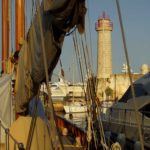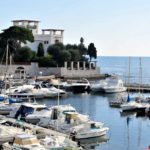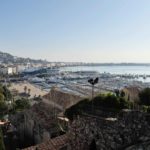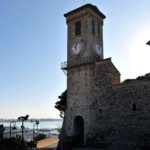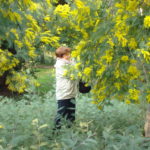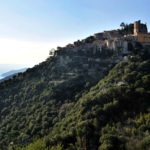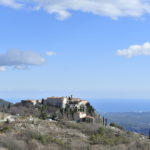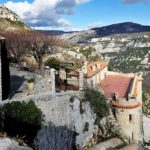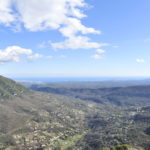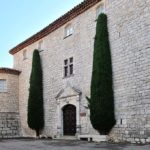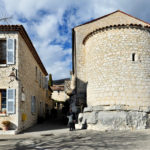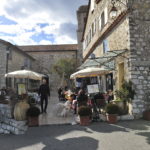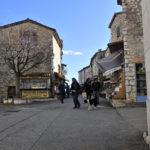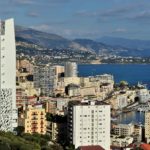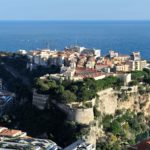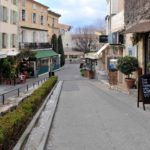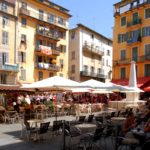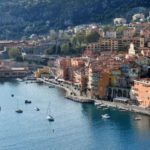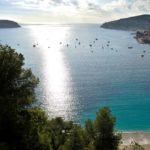Towns and villages of Alpes-Maritimes
Antibes (27,5km- 33’)
TO SEE IN ANTIBES :Port Vauban, the old port and the Camille Rayon dock where the most luxurious ships are docked. The top of the ramparts. Fort-Carré, reminiscent of some of the most prestigious episodes in the history of Antibes. The ramparts that follow the old walkway. The chapel of the Holy Spirit, the birthplace of Jacques Audiberti, the Cathedral, the “Sarrasine” towers and the ancient Château Grimaldi, now Picasso Museum. The Peynet Museum with cartoons at the Place Nationale. The chapel Saint-Bernardin built in 1513 renovated, the fountain of Fontvieille and the Provençal Market.
Auribeau (9 km- 17’)
Auribeau, perched on a rocky peak at the mouth of the gorges of Siagne, rises facing the sea.
Beaulieu-sur-Mer (51km- 1h) and St Jean Cap Ferrat (51,8km- 1h)
DO NOT MISS :
– The villa Kérylos, in Beaulieu-sur-Mer, was built by the architect Emmanuel Pontremoli between 1902 and 1908 on a rock
y promontory overlooking the Mediterranean Sea, on the road along the sea. This house built and furnished on the model of villas of ancient Greece of the 2nd and 1st century BC. J. – C. for the archeologist and specialist of the Hellenistic period, Théodore Reinach (1860-1928), is bequeathed to the Institute of France in 1928.
– Villa Ephrussi de Rothschild is one of the most beautiful Renaissance palaces of the French Riviera built on a summit of the peninsula of Cap Ferrat between 1905 and 1912 by Baroness Béatrice Ephrussi de Rothschild (1864-1934).
Biot (19,8km- 33’)
Medieval jewel, ideally located between Nice, Cannes and Grasse. The arrival of artists such as Fernand Léger, whose museum stands at the foot of the village, and the installation of the Verrerie de Biot have brought an artistic dynamic. The Verrerie de Biot, which welcomes nearly 700,000 visitors every year, brings together:
– the Ecomuseum of the Biot Glass,
– the big showroom,
– the International Glass Gallery,
– a decoration shop,
– a restaurant.
– and above all, the Halle des Verriers where we discover the master glassmakers working in the tradition and know-how of the Verrerie de Biot.
La Brigue (121km- 1h56’)
Notre Dame des Fontaines: Nicknamed the “Sixtine Chapel of the Southern Alps”, the Chapel of Notre Dame des Fontaines of La Brigue is entirely decorated with murals dating from 1492 (year of the discovery of America by Christopher Columbus). The 25 paintings on the side walls are masterpieces by Giovanni Baleison and Giovanni Canavesio, both painters from Piedmont. Open from April 15th to October 15th, every day. From 10h to 12h30 and from 14h to 17h30 or on reservation at the Tourist Office (Tel 33 (0) 4 93 79 09 34).
Cabris (7,3km- 15’)
Cabris is one of those wonderful perched villages whose Côte d’Azur has the secret. Despite having been ravaged many times by the wars, in the time of Queen Jeanne in the 15th century and then during the Revolution, the village retains an intact charm. You will be delighted to stroll through its narrow stairways lined with old gray stone houses, between succulents and fragrant lavender, proud cypresses and even some palm trees. Cabris has often attracted writers, from Antoine de Saint-Exupéry who spent his childhood holidays at the beginning of the 20th century, to Albert Camus who made several passages in the 50s, through André Gide who stayed there back from his trip to Egypt in 1940. It is probably for this reason that Cabris also hosts the Vienot Foundation dedicated to the work of writers. Landscapers, art craftsmen working with olive wood, shaping stained glass windows, or decorating the little santons of Provence, Cabris is a village of artists that remains alive and chic at the same time.
Cannes (17,3km- 28’)
Cannes, a seaside town on the French Riviera, is famous for its international film festival. La Croisette, a boulevard along the coast, is lined with sandy beaches, luxury shops and palaces. This boulevard also houses the Palais des Festivals and Congresses, a modern building with its red carpet, and the stairsteps of Stars, the “walk of fame” Cannes. The Suquet (mound in Occitan), sometimes called Mont-Chevalier, is the oldest district of Cannes, its located on a hill, westside of the bay, above the Old Port.
Lerins Islands
– Ste MARGUERITE
Just a few minutes by boat from Cannes, Sainte-Marguerite Island is an exceptional island where nature, culture and relaxation join in total h
armony. As soon as you disembark, you will be captivated by the fragrance of pine and eucalyptus, as well as the richness of cultural and leisure activities available on the island. The best way to explore the island is to follow the marked trails that take you on a botanical and historical tour of the site. You will stroll by the Batéguier pond with its numerous species of migratory birds to the Point de la Convention to find unique plant species. Continue on to the Fort Royal, the former residence of the Man in the Iron Mask. The Maritime Museum is not to be missed; sheltered within a fortified enclosure, it offers visitors an insight into the area’s history. For lovers of pure relaxation Sainte-Marguerite Island really is not to be missed.
– St HONORAT
A sunny paradise, a haven of greenery, freshness and an oasis of silence, Saint-Honorat Island is a private island belonging to the monks of Lérins Abbey. Visit Saint-Honorat Island for an exceptional day out. The island is full of activities to suit everyone, whether on a family day out or a work trip (seminar). Visit Saint-Honorat Island and discover unspoilt nature. You can walk across this wooded island of Aleppo pines and superb umbrella pines, along paths on the edge of turquoise waters. You can visit many monuments free of charge. Saint-Honorat Island has been a listed site since 1941 and has some five historic monuments: the monastery tower (first listed in 1840 in the Maritime Alps); the Chapelle Saint-Sauveur (1886); the Chapelle de la Trinité (1886) and two Napoleonic hot shot furnaces (1908).
Eze (62km- 56’)
Eze village, perched in an eagle’s nest at the top of an imposing and beautiful cliff, is a tourist hotspot and one of the most picturesque villages of the department, it is a must to visit (despite the crowd … ).
Gourdon (13,8km- 22’)
Archetype of an eagle’s nest, perched village at the end of a rocky outcrop, with an extraordinary panoramic view over more than 80 kilometers of coast between Théoule sur mer and Nice, Gourdon forms a remarkably harmonious ensemble of medieval houses. white stone that crowd around their feudal castle, all perfectly restored and maintained.
Gréolières village (25,8km- 40’)
Located at the foot of the Cheiron, Gréolières watches at 800 meters of altitude on the valley of “Du Loup” (Wolf). The village is dominated by the medieval ruins of “Hautes Gréolières” where you can still admire the St Etienne chapel.
Menton (72,8km- 1h05)
The old town with its beautiful old facades, worth the sightseeing, you will find the atmosphere and charm of yesteryear. Go strolling in Garavan, (between the old city and the Italian border), the luxury villas are held in a row, built formerly by the notables and the upper middle class who went down to the Côte d’Azur to have a good time. Menton (former possession of the Grimaldi) was a resort popular with crowne
d heads. They took their summer quarters in Menton and liked to meet up with wealthy people. Do not miss the famous Lemon Festival which invests the city for 3 weeks between February and March. Throughout the promenade of the Sun by the sea, parade the tanks built and decorated with citrus fruit according to a different theme each year.
Monaco (63,3km- 1h04’)
TO SEE: The splendor of the Prince’s Palace, the Cathedral, the Fort Antoine, the Saint Devote Church, the Saint Charles Church, the Casino of Monte-Carlo, the Courthouse, the Chapel of Mercy, the Oceanographic Museum, the charm of the old town, the Exotic Garden, the Monaco Grand Prix …
Mougins (vieux village) (11,8km- 16’)
Village of Gastronomy and the Arts of Living and prestigious golf destination, Mougins enjoys a privileged location 11,8 kilometers from Grasse, Mougins similar to a citadel, dominates towns and villages and attracted a number of prestigious artists such as Picasso, Picabia, Paul Eluard, Jean Cocteau and Man Ray. Mougins is perched on his hill and wrapped around his church steeple. Its small streets conceal small galleries of artists and good tables.
Nice (42,3km- 42’)
Nice, with its Cours Saleya flower market, its old town, its Sainte Réparate Cathedral, its squares, its narrow streets and its port, has managed to preserve this indefinable charm which makes it a center of tourist excellence where Art of Living mixes with Locale Culture. The city is located on the shingle coast of the Baie des Anges, bordered by the Promenade des Anglais. Prized by the European elite in the nineteenth century, the city has attracted the attention of artists for a long time. Its rich museums (… Marc Chagall and Henri Matisse …) and its many events are world famous.
St Cézaire (15,9km- 25’)
This beautiful medieval village hung on vertical cliffs overlooking the Siagne is well worth the visit. Saint Cézaire sur Siagne is set on a rocky peak in an idyllic landscape of wooded hills overlooking les Maures and l’Esterel, Saint Cézaire is a site that has attracted men since the Neolithic. The caves of Saint-Cézaire are visited since the beginning of the 20th century, a film with Charles Vanel was shot there in 1920. The concretions and draperies seem more fantastic during the sound and light shows that are given in summer.
St Jean Cap Ferrat (51,8km- 1h)
Saint-Jean Cap Ferrat is an exceptional site and one of the most beautiful pearls of the French Riviera. Its tranquility, its mild winter and its palaces make it a holiday resort very popular with a wealthy aristocracy and great international fortunes. To better appreciate the beauty of Saint Jean Cap Ferrat, discover it on foot by taking the path of the seaside. It is marked on 14 km and divided into 3 parts: the tour of Cap Ferrat, the Pinewood and the Maurice Rouvier walk which connects Saint Jean Cap Ferrat to Beaulieu. At the end of Cap Ferrat is one of the most beautiful palaces in the world, the Grand Hotel du Cap, which stands in the middle of a wonderful garden. Visit one of the most beautiful villas of the peninsula that is open to the public and visit as a thousand-and-one-night palace: The Ephrussi de Rothschild villa decorated with the treasures of Baroness Beatrice Ephrussi de Rothschild and her gardens .
St Paul de Vence (22km- 36’)
Standing on its rocky outcrop and surrounded by its ramparts built on the order of François I °, St Paul is one of the most beautiful villages of Provence. The splendor of the site, its gentle way of life and its exceptional light have inspired many famous artists, writers, poets and painters, some of whom have definitively taken up residence there. You can also find some of these famous signatures at the Maeght Foundation which has a large collection of paintings, sculptures, drawings and graphic works of the twentieth century. As you stroll through the picturesque little streets of the village, from the Porte Royale to the Porte Sud via the Rue Grande reserved for pedestrians, you will discover magnificent stone facades of the sixteenth and eighteenth centuries. You will lose yourself with pleasure in the maze of its charming alleys where the exuberance of its gardens, its small squares, its old fountains, its porches and windows delicately worked make the happiness of the photographers.
St Vallier de Thiey (14,4km- 22’)
Taking the historic Napoleon Road is already an adventure. Saint-Vallier de Thiey is a must, as pleasant as it is. Lordship until the Revolution, then summer climate station put in fashion by the families of Grasse in the 19th century, the village has multiple charms, both historical and natural.
Valbonne (10km- 19’)
Valbonne is a very beautiful old town which is lucky to have an old center sheltered by its ramparts which has kept all its character and is visited with delight, especially since it is perfectly restored and maintained. It is an extremely pleasant village to visit, where it is relaxing to stroll in the beautiful narrow streets, all of which will take you to the marvelous Renaissance arcaded square, where it is so good lunch on the terrace of one of the restaurants. Those who prefer the historical heritage will not miss to visit the monastery founded in the year 1200 by the order of Chalais: Romano-Gothic style and recently restored, it has a portal and a Romanesque altar, reliquary busts (18th century), a chapter house and a treasure room or the dormitory of the monks. Guided tours of the abbey and the Heritage Museum housed in the former wing of the lay brothers: by appointment and prior reservation with the Tourist Office of Valbonne Sophia-Antipolis (04 93 12 34 50). Finally, do not leave Valbonne without having tasted the local specialty, the wine made from Servan grapes, a variety that “can be preserved until Easter” … so do not wait any longer to find out.
Villefranche-sur-Mer (49,5km- 1h)
Villefranche shines with its superb harbor which is reputed to be one of the most beautiful in the Mediterranean. The port, the citadel, the old town, the curve of its shore make all the picturesque of this city which goes back to 130 years before J-C. Its port is at the same time a small fishing port with its colorful boats and its nets and a port of tourism place of call of many cruises. You can stroll along the fishermen’s wharves, lined with restaurants and terraces and if you continue to the end you will reach the long beach of Villefranche which is pleasant from the first days. The Citadel houses an auditorium, museums, the city of crafts and hanging gardens. The soldiers left him in 1965 … to make room for the artistic collections of the city: Museum of Art and History, Collections of Goetz-Boumeester (works of Picasso, Picabia …), Foundation-museum Volti (contemporary sculptures) and even the Museum of Alpine Hunters. Jean Cocteau, a child of the country, liked to return to Villefranche, where he found his fishermen friends to whom he dedicated and decorated especially to their attention the Saint-Pierre Chapel … not to be missed.


